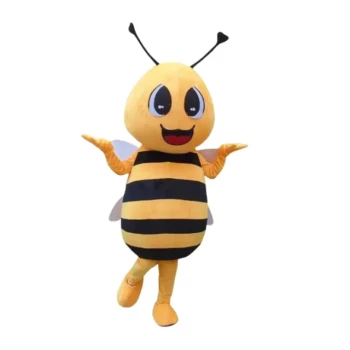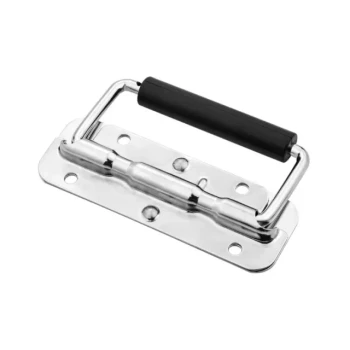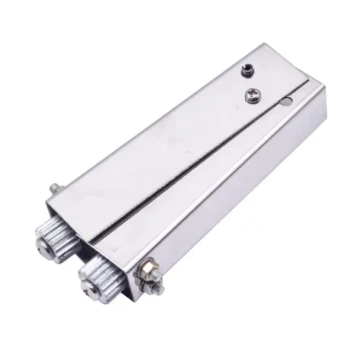At their core, bee suits are made from two primary materials. The most common options are thick cotton canvas or advanced, multi-layered ventilated mesh fabrics. Each material is chosen specifically for its ability to prevent a bee's stinger from reaching the skin.
The choice of bee suit material is a fundamental trade-off between the robust, sting-proof nature of traditional cotton and the superior comfort and airflow provided by modern ventilated mesh.

The Core Materials: A Tale of Two Fabrics
Understanding the two main types of fabric is the first step in choosing the right suit. Each has a distinct approach to keeping you safe and comfortable.
Traditional Cotton Canvas
Cotton suits rely on density and thickness for protection. The heavy weave of the canvas is difficult for a bee's stinger to penetrate effectively.
This material is highly durable and has been the standard for beekeepers for decades. It offers excellent sting protection.
However, its primary drawback is a lack of breathability, which can make it extremely hot to wear during warm weather or long hive inspections.
Modern Ventilated Mesh
Ventilated suits use a clever, multi-layered design. They are not just simple mesh; they typically consist of three distinct layers, often sandwiching a thicker foam-like material.
These suits are often called 3-layer ventilated mesh suits. The combined thickness, often around 5mm, is the key to their effectiveness.
This design works because the total depth of the fabric is greater than the length of a bee's stinger. Even if a bee tries to sting, its stinger simply cannot reach your skin through the multiple layers.
Understanding the Trade-offs
Choosing a material is not just about protection; it's about finding the right balance for your specific needs and climate.
Protection vs. Breathability
This is the central conflict. A thick cotton suit offers fantastic, straightforward protection but can feel like wearing a sauna in the summer.
A ventilated mesh suit, while also highly sting-proof, prioritizes airflow and comfort, making it a far better choice for beekeepers in hot climates or for those who spend long hours in their apiary.
Durability and Maintenance
Cotton canvas is exceptionally rugged and can stand up to years of hard use with basic care.
Some mesh materials, particularly certain types of foam air mesh, can be less durable over the long term. High-quality 3-layer mesh, however, is designed to be resilient.
Comfort and Fit
While mesh provides superior ventilation, some designs can be slightly irritating to bare skin. It's often recommended to wear a light shirt underneath for maximum comfort.
Cotton suits, while hot, are generally comfortable against the skin.
Beyond Materials: Suit Design
The material is often paired with a specific suit design that caters to different levels of beekeeping.
Full Suits
These provide maximum, head-to-toe coverage. They are the safest option, especially for beginners or those working with aggressive hives.
Jacket-Only Suits
A jacket provides protection for the upper body and head. It's a convenient option for experienced beekeepers performing quick, routine hive inspections.
Making the Right Choice for Your Needs
Your ideal suit depends entirely on your climate, the amount of time you spend with your bees, and your personal comfort threshold.
- If your primary focus is maximum durability and occasional use: A traditional cotton canvas suit is a cost-effective and highly protective choice.
- If your primary focus is comfort during long inspections or in hot weather: A 3-layer ventilated mesh suit is the definitive choice for superior airflow and protection.
- If your primary focus is convenience for quick hive checks: A jacket-only suit in either cotton or mesh offers a practical balance of safety and ease of use.
Ultimately, selecting the right material transforms beekeeping from a chore into a comfortable and safe passion.
Summary Table:
| Material Type | Key Characteristic | Primary Advantage | Best For |
|---|---|---|---|
| Cotton Canvas | Dense, thick weave | Maximum durability and sting resistance | Beekeepers prioritizing robust protection and occasional use |
| Ventilated Mesh | Multi-layer (3-layer) design | Superior airflow and comfort in heat | Beekeepers in hot climates or those performing long inspections |
Ready to equip your apiary with the right bee suit?
HONESTBEE supplies professional-grade beekeeping suits and equipment to commercial apiaries and distributors. Whether you need the rugged protection of cotton canvas or the advanced comfort of ventilated mesh, we provide wholesale solutions tailored to your operational needs.
Contact HONESTBEE today to discuss your requirements and enhance your beekeeping safety and efficiency.
Visual Guide

Related Products
- Cotton Beekeeping Suit and Round Hat with Veil Bee Keeper Protective Gear
- White Beekeeping Protective Suit and Hat with Fencing Veil for Beekeepers
- Beekeeper Cowboy Hat and Veil for Beekeeping
- Heavy Duty Cowboy Beekeeper Hat with Visibility Veil Outdoor Professional Beekeeping Protective Gear
- Professional Beekeeping Suit for Kids and Girls Childrens Bee Keeper Suit
People Also Ask
- What is recommended for beginners in beekeeping regarding protective clothing? A Complete Safety Guide for New Beekeepers
- Why is a jacket with a hat veil recommended for beekeepers? Essential Protection for Your Face and Neck
- What are the benefits of a fully ventilated beekeeping suit? Stay Cool and Protected in Hot Climates
- How should a beekeeping suit be hung to maintain its shape? Protect Your Investment with Proper Storage
- What should be considered regarding the color of beekeeping clothing? Ensure Your Safety and Keep Bees Calm



















